Header logo
header top contact widget
Dental Fears
Avoid Dental Implant Failure
Posted on Apr 04, 2024 by William J. Claiborne, DDS MS
There are reasons to go to an expert for certain things. For example, I’d never try to do electrical work around my house on my own; I’d call an electrician.
When it comes to dental implants, there are also reasons to seek out an “expert.” In this article, I’ll explain why it’s best to have your dental implants selected and placed by a periodontist.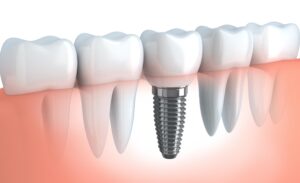
First, let’s look at the structure of an implant. Serving as a replacement for a missing tooth, the implanted portion is a titanium screw that is positioned into the jawbone. Over the course of 3-6 months, the jawbone grows around the implant, securing it in place. It can now support an artificial tooth or crown.
Dental implants have many benefits when it comes to restoring biting/chewing/speaking function and smiling appearance, including:
- enhancing the appearance of a smile
- improving biting and chewing function
- stabilizing surrounding teeth and jaw tissue
- halting the process of bone loss, known as resorption
- an increased quality of life for many people
Dental implants have an excellent success rate – 90-95%. However, there are instances where a dental implant can fail.
Dental implant complications can occur from infections, gum recession, and nerve and tissue damage. There is also a higher risk of implant failure for individuals who smoke or have diabetes, gum disease, have radiation therapy to the jaw area or take certain medications.
A periodontal specialist has advanced training and skills in the diagnosis and placement of all types of dental implants. This means that this dental specialist can determine which implant system will work best for your individual needs. For example, a person who has lost a great deal of bone mass may only be a candidate of certain implant types or may need a sinus lift prior to placement. A periodontist can make these determinations so your potential for implant success is higher.
One of the most common causes for implants failure is due to an infection at the implant site. Because a periodontist specializes in the care of gum tissues in the mouth, he or she can take measures to treat the infection at early stage to resolve the problem. However, in some cases, treating the infection may require implant removal in order to reach the infected bone tissue.
Using advanced skills, a periodontist can also assess your gum health prior to implant placement. He or she can pretreat any periodontal diseases so the implant has a healthy foundation. When the gum tissues around the implant are inflamed or have receded, the implant is at risk for entry of bacteria into the area where it is implanted.
After the implant is placed, it should fuse with the bone. A complication that prevents this may require the dental surgeon may remove it. Fortunately, after the implanted area is restored to a healthy state, the implant procedure can be redone.
Another benefit in using a periodontal specialist for implant placement is in their in-depth understanding of the nerves and tissues surrounding the jaw bones. There is a risk for failure when a dental implant is placed too close to a nerve. For example, there is a nerve that runs horizontally through the lower jaw. If the implant is placed in close proximity, it can cause numbness, tingling, or pain.
Nerve or tissue damages can result in:
-
- numbness on the side of the implant, including the lower lip and chin
- persistent pain or discomfort
- tingling, tickling, or burning sensations in the gums and skin
While precision placement (depth, position and angle) is a bonus of a periodontist’s skills for implant patients, our Asheville periodontal dental patients have the benefits of advanced technology. Our Computerized Dental Implant Placement system is designed for pre-surgical positioning of dental implants that uses a 3D model of the patient’s jaw.
Once the implant type is selected, a template is developed for optimal treatment success, even for complex cases. This minimizes disruption of gum tissues and targets implant placement at ideal depths and angles. Thus, treatment success rates are higher with faster (and more comfortable) healing time.
An example of this precision placement guidance in with upper dental implants. With declined bone mass of the upper jaw (typically from years of missing tooth roots), the sinus cavities can hover too close to the position(s) where implants are to be placed. In these cases, we can perform a sinus lift.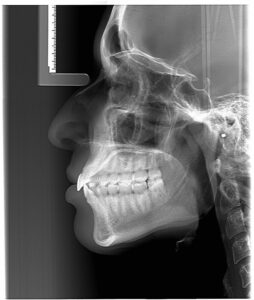
Should the dental implant protrude into the sinus cavity, the sinuses can become inflamed, causing:
- pain, tenderness, or swelling around the cheeks, eyes or forehead
- nasal blockage, often with green or yellow mucus
- a reduced sense of smell
- headaches
- toothache
- persistent bad breath
Of course, like a natural tooth, excessive force or impact can cause a dental implant to crack or become loose. For example, for people who grind or forcefully clench their teeth (“bruxing”) during sleep may need to wear a bite guard to prevent damage to the implant as well as their natural teeth.
In some instances, it can take up to 5 years for implant-related problems or infections to become apparent to the patient. Any issues that arise around the site of the dental implant should be examined and addressed without delay.
We want your dental implant(s) to last your lifetime and bring you as much eating and laughing pleasure as they are known to give. The best way to ensure the success of a dental implant is to follow the aftercare advice your periodontist and dentist provide.
As with a person’s natural teeth, an implant and the tissues surrounding it require regular cleaning. Daily flossing in the area at least once per day is needed after the gums have healed. Some patients prefer interdental brushes to access areas that are more difficult to reach.
 Regular dental check-ups and appointments for cleanings should occur at least twice a year to ensure the longterm success of your implants. Once a quarter may be advised for some individuals who have higher risks for plaque development.
Regular dental check-ups and appointments for cleanings should occur at least twice a year to ensure the longterm success of your implants. Once a quarter may be advised for some individuals who have higher risks for plaque development.
Optimal comfort for our Western Carolina patients has always been a priority. For many, a desired level of comfort and relaxation includes sedation options. Here, we offer several sedation options, including oral and IV sedation (“twilight sleep”). These are administered safely by an anesthesiologist who uses advanced safety equipment throughout your treatment.
If you are considering dental implants, you may wish to begin with a consultation appointment. During this time, we can explain the vast difference in comfort, treatment time, and success available through our specialized skills and extensive technology.
Call 828-274-9440 to schedule. New patients are always welcome.
Reshaping Gum Tissues To Protect Oral Health & Enhance Smiling Appearance
Posted on Mar 21, 2024 by William J. Claiborne, DDS MS
When people think about the appearance of their smiles, it’s typically the teeth that are the focus. Everyone wants a smile that enhances appearance, instills self-confidence and gets compliments. Yet, the appearance of a smile involves more than just teeth. The “frame” of gum tissues that arch the teeth most visible in a smile have a lot to do with how a smile looks.
As a periodontal specialist in Asheville, NC, part of my specialty involves the treatment of all stages of periodontal (gum) disease, the placement of dental implants, and the contouring of gum tissues. Gum contouring is generally done for esthetic reasons but may also be advised for oral wellness.
Gums most often pull away from the base of teeth (or “recede”), exposing darker areas of the tooth. This darker area is part of the tooth’s root and highly vulnerable to damage. Recession also causes teeth to look longer and expose darker tooth root areas of the tooth. Being sensitive to hot or cold – causing a sudden jolt of pain – is often the final warning sign that the gums are not protecting tender root segments of the tooth.
Gum recession is commonly due to:
• Gum disease, which destroys gums tissues, causing them to loosen their firm grip around the base of teeth. This enables oral bacteria to penetrate beneath the gum line, reaching vulnerable bone and tissues.
• Over-vigorous toothbrushing can wear away precious gum tissues that surround the base of teeth. When using a back-&-forth scrubbing motion, or a hard toothbrush, gum tissues can be scrubbed off. Too, using abrasive substances to brush (such as baking soda) not only wear down gum tissues, they wear away tooth enamel.
• The aging process lessens hydration in the body. Because the gum tissues are moist layers that require continual hydration (supported by saliva), oral dryness can cause the gums to draw up as they become drier. Unfortunately, this creates more challenges in maintaining healthy teeth.
While gum recession is an oral health concern, it is a cosmetic issue as well. For an attractive smile, teeth should be arched by a balanced level and shape of gum tissues. When there is too much gum tissue showing above teeth or varying heights of gums arching teeth, the height and symmetry of gum tissues can be corrected by a periodontist.
For example, in a gummy smile, too much of the gum line is visible. This makes teeth look short and draws the eye to the gums rather than the teeth. Gum tissues should complement teeth with a balanced line of gum tissues. While a gummy smile is not generally problematic for one’s oral health, many people find it makes them “hold back” on smiling fully.
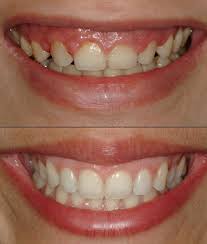
Before & After Of A Gummy Smile
The procedure to correct a gummy smile is a gingival lift, also known as a gum lift or gum contouring. This in-office procedure is performed to reduce and reshape highly visible gums.
In our Western NC periodontal dental office, we use a dental laser to perform a gingival lift. Our dental laser gives a precision line while only removing specific areas of the gums, leaving all surrounding tissue unharmed. This allows us to reshape the gums to create better balance in the smile.
A laser gingival lift also offers patients a more comfortable experience since it causes very little pain and therefore requires only topical anesthesia. In addition, laser treatments result in almost no bleeding and tissues tend to heal more quickly than after traditional surgery.
We also perform gum grafting that recovers areas where gum recession has occurred. This helps to protect the tooth roots and improves the appearance of the smile.
In gum grafting, we normally take a small area of tissue from the roof of the mouth and place it in the area of recession. When there is not sufficient tissue available, a graft may be from a donor source. The graft is attached to the natural gum tissue and gently sutured into the position where it corrects a smile’s appearance and reduces further recession and the potential for gum disease.
Several teeth may be involved in gum grafting when used to even out the gum line or reduce the risk of gum and bone collapse after a tooth has been lost. In these cases, cosmetic gum surgery is beneficial in reshaping excess gum and bone tissue. It also reduces sensitivity from exposed roots to hot or cold foods.
As a periodontist, I most commonly see gums that cover too much of the teeth as being due to genetics. When gums fail to cover sufficiently over the base of teeth, it’s typically the cause of recession, which can occur from several reasons (as listed prior). Regardless of why it has occurred, our goal is to provide the patient with the most healthy and esthetic outcome in a procedure that is comfortable, successful, and requires minimal healing time.
In our Asheville periodontal dental office, we offer some of the most advanced dental technology available. In addition to amazing imaging, such as Cone Beam 3D imaging, we provide Laser-Assisted New Attachment Procedure (or LANAP). This is a cutting-edge protocol to more efficiently and effectively treat periodontitis (advanced gum disease) with the PerioLase® MVP-7™ laser. Treatment is minimally invasive and helps to minimize both discomfort and recovery time. It has also been found to stimulate bone regrowth in damaged areas.
Additionally, our office offers both oral and I.V. sedation (“twilight sleep”) for complete relaxation during treatment. Sedation is administered safely by a doctor of anesthesia to provide optimal safety and comfort.
If finances have kept you from seeking out the care you need or the beautiful smile you desire, feel free to contact our friendly staff and arrange a consultation appointment. During this time, we can discuss the best options for you, cost estimates, and predicted treatment time.
We can also review several payment plans that make treatment affordable through extended, interest-free payment periods with no down payment required. These often help our patients enjoy their confident, new smiles while making easy monthly payments that are budget friendly.
Call 828-274-9440 to schedule.
How A Periodontist Can Help Cancer Patients
Posted on Mar 18, 2024 by William J. Claiborne, DDS MS
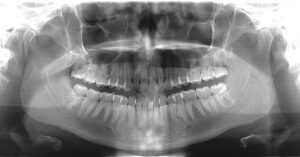
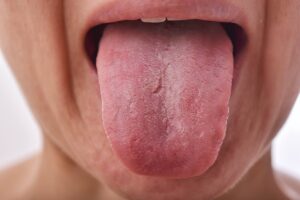
As You Age, Avoid A ‘Melting’ Face With Dental Implants
Posted on Feb 26, 2024 by William J. Claiborne, DDS MS
It seems the older one gets, the more conscious he or she is to the need for good health practices. While periodic exams and check-ups are part of this, eating healthy and getting ample exercise are practical ways to support a healthy body.
The same principles apply to oral health. While annual physical exams are needed, regular check ups and dental hygiene cleanings are as well. Through decades of research, “bad” bacteria in the mouth can lead to inflammatory reactions that can offset or worsen a number of health problems far beyond the mouth.
For now, let’s focus on your gum health and the presence of teeth. While natural teeth are the ideal structure for biting, chewing and speaking, the rigors of age – the natural wear and tear – can take its toll on teeth. Decay, gum disease, accidents and certain illnesses can lead to losing a tooth or teeth over the span of a lifetime.
There are several ways to replace a missing tooth (or teeth). A crown-&-bridge is a longstanding method to replace one or several teeth in one area. Or, a partial denture can replace a “scattering” of teeth in the same arch. However, the downside of these oral prosthetics is what’s beneath the gum line.
Your natural teeth are supported by your upper and lower jaw bone, known respectfully as the maxilla and mandible. With these strong, study bones, tooth roots are held securely. Thus, biting and chewing occurs comfortably.
The jaw bones are actually kept healthy by the presence of tooth roots. These roots provide stimulation to the bone as well as nourishment that feeds through the tooth’s interior.
When a tooth is removed, so is the stimulation and nourishment to that area of the jaw bone. Without it, the bone begins to shrink. As it declines in height, the adjacent teeth are more vulnerable to loss. Statistics show that teeth adjacent to areas where natural teeth are missing will be the most likely to be lost next.
This has a domino effect. Partials can replace the presence of teeth above the gum line, but there is nothing to benefit the jaw bones below. Thus, tooth loss continues and can go from a few missing teeth to losing all teeth (being “edentulous”).
According to the Center for Disease Control & Prevention (CDC), 69 percent of adults between the ages of 35 – 44 have lost at least one permanent tooth. By age 50, Americans are missing an average of 12 teeth. For adults between the ages of 65 – 74, 26 percent are missing all of their natural teeth. That’s over one-fourth of the adult population over age 65.
Although dentures and partials mimic the presence of teeth, the jaw bones below are shrinking away, and at a rather rapid pace. The pressure of wearing a denture or partial actually speeds this process up, known as “resorption.”
As these bones decline in mass, deep wrinkles form around the mouth. The corners of the mouth turn downward. The chin takes on a more pointed form and the mouth sinks into the face. The nose seems to get closer to the chin as the jaw bones thin. Jowls form as facial muscles detach from shrinking bone structure.
Changes in facial appearance also take place when bone structures shrink. For example, as the jaw bone thins, deep wrinkles form around the mouth. The corners of the mouth will start to turn down, even in a smile. Jowls form on each side of the face as facial muscles detach from the shrinking bone structure.
As the jaw bone declines further, the chin becomes more pointed and the nose seems to get closer to it. This leads to a collapsed mouth that is known as a “granny look.” This look ages the appearance of an individual far beyond their actual years.
Not to be overlooked is the ability to comfortably bite and chew food. This is essential for the digestive process, since the first stage of digestion begins in the mouth. When adults struggle to eat with a denture or partial, the efficiency of this initial stage of digestion is compromised.
It’s not unusual for adults who have “rocky” or “slippery” dentures to opt for soft foods that dissolve easily in the mouth. These are often carb heavy and lack the nutritional value of a diet that combines healthy proteins, fruits and vegetables.
However, missing teeth or dentures that move when eating can cause other detrimental problems. When people sense their dentures may cause embarrassment when eating, speaking or laughing with others, social involvement can take a hit. According to a 2012 statement by the World Health Organization:
“Oral health is essential to general health and quality of life. It is a state of being free from mouth and facial pain, oral and throat cancer, oral infection and sores, periodontal (gum) disease, tooth decay, tooth loss, and other diseases and disorders that limit an individual’s capacity in biting, chewing, smiling, speaking, and psycho-social well-being.”
As an Asheville periodontist, my dental specialty includes the diagnosis and placement of dental implants. Dental implants are the closest thing to natural teeth.
Dental implants were designed to recreate the presence of natural teeth both above and below the gum line. Because teeth attached to the implants are supported by the jaw bone, the study foundation restores the ability to bite and chew without movement or fear of embarrassing slips.
For patients who are missing a great deal of bone, we offer bone rebuilding that does not require a bone graft. We also perform sinus lifts (when the upper jaw has declined to a significant level) to restore sufficient bone distance between vital structures.
For many of our dental implant patients, their lives become more active with the restored confidence. They become more socially involved, have more self-confidence and higher self-esteem. And the advantages of dental implants over other tooth replacement options are numerous.
• Dental implants are designed to last your lifetime. They do not decay, need root canals or compromise neighboring teeth or bone structure.
• Because dental implants are positioned in the jaw, they recreate stimulation to the bone. This helps to preserve the bone’s mass, halting the pace of jaw bone shrinkage (known as resorption).
• Resorption is what causes changes in one’s facial appearance, aging one’s appearance far older than their actual age.
• Dental implants do not move or slip when eating, speaking or laughing. A denture is designed to fit the contours of one’s gum ridge; contours that exist at the time the denture is made. However, as resorption reduces bone height, the ridge that holds the denture flattens out over time. This is why a denture becomes ‘wobbly’ or ‘slippery.’
• Dental implant treatment is largely determined by the number of implants placed. In most cases, one implant can support more than one tooth. A full arch (all upper or lower) of teeth are typically supported by several strategically-placed implants.
• Unlike a crown-&-bridge, dental implants so not need the support of adjacent teeth. Therefore, it is not necessary to have teeth shaved down for crowning simply to serve as supports for a bridge.
In our Asheville periodontal dental office, we have highly-advanced technology that aids in the diagnosis and placement process of dental implants. These features help to enhance patient comfort, shorten treatment time, and provide optimal results. Advanced technology includes:
– Computerized Dental Implant Placement – an advanced system for pre-surgical positioning of dental implants using a 3D model of the patient’s jaw. Once the implant type is selected, a template is developed for optimal treatment success.
– Cone Beam Imaging – is ideal for diagnoses and treatment planning through images that provide a clear view of the upper and lower jaw (including nerve canals), with rotations that show sagittal, axial, and coronal planes in a process that is quick, painless and at minimal radiation levels.
– Dental Laser – This small, hand-held device is a tremendous asset when it comes to both the health and appearance of gum tissues. Not only does the laser eliminate or greatly minimize bleeding during procedures, it reduces numbing requirements, removes bacteria and easily uncovers gum tissue where dental implants have been placed. Additionally, laser dentistry can beautifully re-contour or repair gum tissue with a precision line.
As a periodontal specialist serving Western NC, I take great pride in the diagnosis and placement of dental implants with each selected based upon the patient’s individual needs and goals. We provide oral or I.V. sedation to ensure a comfortable experience and a friendly, respectful environment.
To schedule an examination appointment or to begin with a consultation, call 828-274-9440. A referral is not always necessary.
Recent Posts
Categories
Archives
- September 2024
- August 2024
- July 2024
- June 2024
- May 2024
- April 2024
- March 2024
- February 2024
- January 2024
- December 2023
- November 2023
- October 2023
- September 2023
- August 2023
- July 2023
- June 2023
- May 2023
- April 2023
- March 2023
- February 2023
- January 2023
- December 2022
- November 2022
- October 2022
- September 2022
- August 2022
- July 2022
- June 2022
- May 2022
- April 2022
- March 2022
- February 2022
- January 2022
- December 2021
- November 2021
- October 2021
- September 2021
- August 2021
- July 2021
- June 2021
- May 2021
- April 2021
- March 2021
- February 2021
- January 2021
- December 2020
- November 2020
- October 2020
- September 2020
- August 2020
- July 2020
- June 2020
- May 2020
- April 2020
- March 2020
- February 2020
- January 2020
- December 2019
- November 2019
- October 2019
- September 2019
- August 2019
- July 2019
- June 2019
- May 2019
- April 2019
- March 2019
- February 2019
- January 2019
- December 2018
- November 2018
- October 2018
- September 2018
- August 2018
- July 2018
- June 2018
- May 2018
- April 2018
- March 2018
- February 2018
- January 2018
- December 2017
- November 2017
- October 2017
- September 2017
- August 2017
- July 2017
- June 2017
- May 2017
- April 2017
- March 2017
- February 2017
- January 2017
- December 2016
- November 2016
- October 2016
- September 2016
- August 2016
- July 2016
- June 2016
- May 2016
- April 2016
- March 2016
- February 2016
- January 2016
- December 2015
- November 2015
- October 2015
- September 2015
- August 2015
- July 2015
- June 2015
- May 2015
- April 2015
- March 2015
- February 2015
- January 2015
- December 2014
- November 2014
- October 2014
- September 2014
- August 2014
- July 2014
- June 2014
- May 2014
- April 2014
- March 2014
- February 2014
- January 2014
- December 2013
- November 2013
- October 2013
- September 2013
- August 2013
- July 2013
- June 2013
- May 2013
- April 2013
- March 2013
- February 2013
- January 2013
- December 2012
- November 2012
- October 2012
- September 2012
- August 2012
- July 2012
- June 2012


